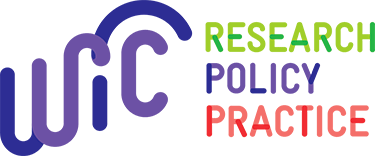Using data from the National Health and Nutrition Examination Survey (NHANES), the author investigated whether older age-ineligible children are healthier in households where siblings are receiving WIC benefits. The results showed that age-ineligible males in WIC households had better health than those in non-WIC households.
FNS produces biennial reports on current participant and program characteristics in the WIC Program for general program monitoring, as well as for managing the information needs of the program. The biennial reports include information on the income and nutritional risk characteristics of WIC participants; data on WIC Program participation for migrant farm worker families; and other information on WIC participation that is deemed appropriate by the secretary of agriculture. (Only the most recent report is included in this document.)
Federal expenditures for USDA's food assistance programs totaled almost $54.3 billion in fiscal 2007, in excess of 2% more than in the previous fiscal year. The five largest food assistance programs: the Supplemental Nutrition Assistance Program (SNAP; formerly the Food Stamp Program), the National School Lunch Program, WIC, the Child and Adult Care Food Program, and the School Breakfast Program; accounted for 95% of USDA's expenditures for food assistance. This report used preliminary data from the FNS to examine trends in the programs through fiscal 2007.
This study, based on 1976-2010 data, examines the relationship between US economic conditions and participation in the USDA ;s five largest nutrition assistance programs. The results of this study strongly suggested that, to varying degrees, economic conditions influenced participation in all of the major nutrition assistance programs, not just in the Supplemental Nutrition Assistant Program (SNAP; formerly the Food Stamp Program).
The authors outlined the scientific literature on the WIC Program since the 2004 research review report. Studies have shown that WIC participation is positively associated with the following: (1) gestational age and mean birth weight; (2) improved diets; and (3) greater use of healthcare and preventive services.
This report summarized workshop presentations and discussions by academic and nutrition professional experts, focusing on how to develop a research agenda for the WIC Program.
This report analyzed WIC eligibility. In 2009, a total of 15.075 million mothers and young children were eligible to enroll in WIC, a 6.4% increase in eligibility from 2008. Among children, WIC eligibility increased by 9.4% between 2008 and 2009. The weaker economy in 2009 increased the numbers of families with incomes below 185% of the federal poverty level. The majority of WIC-eligible infants and children lived in twoâ€parent families and in families with incomes below the federal poverty levels.
Roughly half of infants born in the US receive WIC benefits. However, USDA statistics indicated that eligible pregnant women and children ages 1 to 5 were far less likely to participate in the WIC Program than were eligible infants and postpartum women. Research on the factors that influence the dynamics of WIC participation could inform outreach and targeting efforts so that vulnerable populations receive adequate exposure to the benefits of WIC participation.
This study assessed the impact of WIC services on improving birth outcomes and reducing racial disparities. Results showed that the infant mortality rate (IMR) was lower for WIC participants than for non-WIC participants. For African Americans, the IMR of WIC participants was much lower than that of non-WIC participants. For whites, IMR and preterm birth rates were not improved by WIC participation.
This research explored the associations between childhood morbidities among income-eligible and categorically eligible WIC participant and non-WIC participant groups in a diverse, nationally representative sample of children. According to the results, no significant differences were noted between child WIC participants and non-WIC participants in the following areas: asthma, respiratory illness, severe gastrointestinal illness, or ear infection diagnosis.
